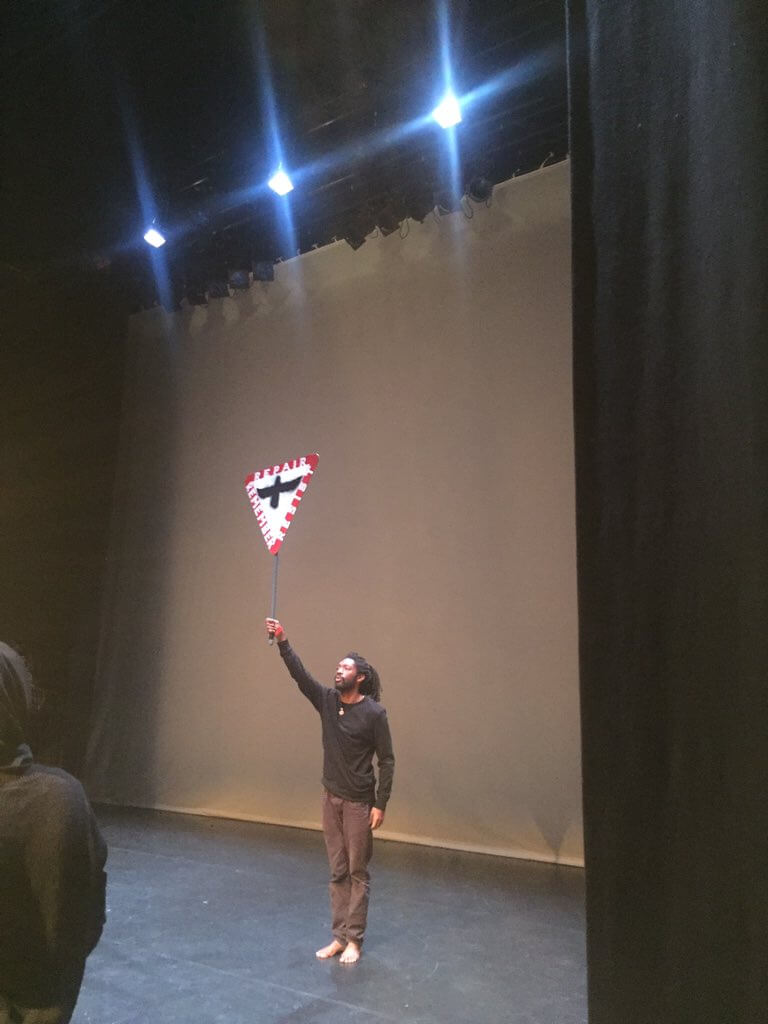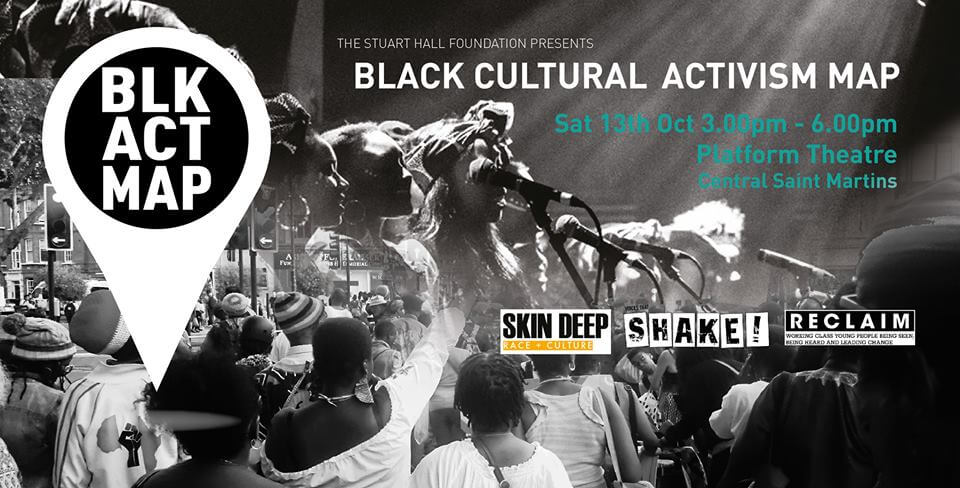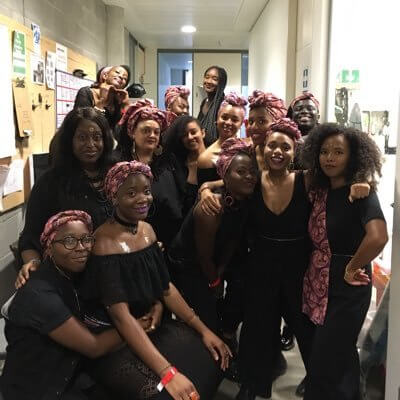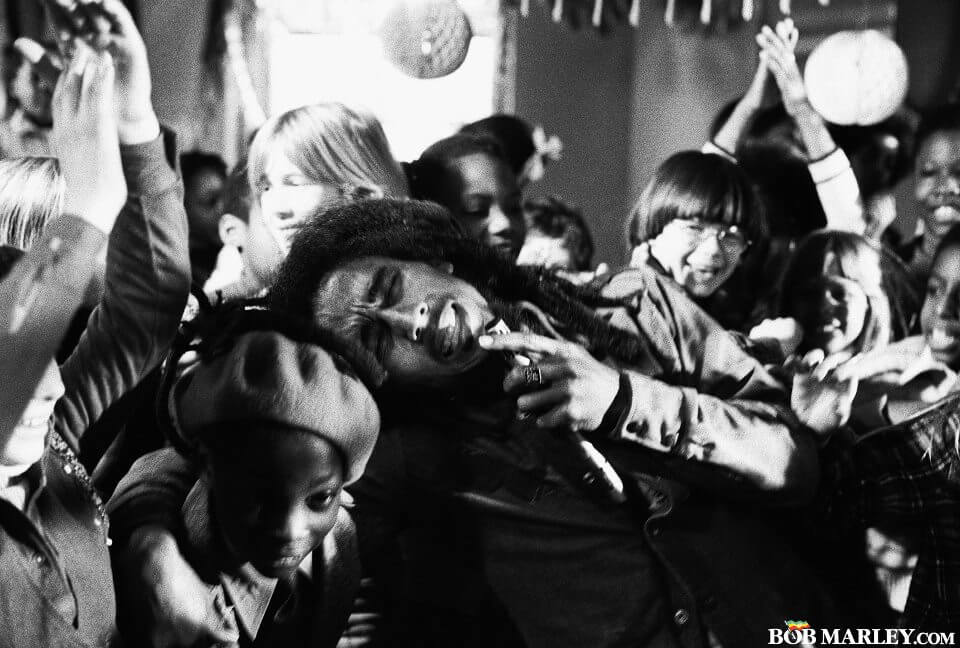
We watch in wonder as dancer Akeim Toussaint Buck moves his body as fluid as water across the black box of the stage. Our eyes are transfixed as the voice of activist Max Farrar intones the words of Sai Murray’s poem ‘Stop Signs’ over the sound system.
And in Lane number 1 from Nigeria, wearing 1969, and now running out of Leeds, David Oluwale.
Lane number 2, hailing from Hornsey, Andre Savvas, 1971
Lane number 3, Aseta Simms, Stoke Newington, 1971
Lane number 4, Lil’ Douza, Oxford, 1972
Lane number 5, Horace Bailey, Ashford, 1973
Lane number 6, Stephen Bernard, Ladywell, 1974
Lane number 7, Joseph Lawrence, Brixton, 1974
Lane number 8, John Lamaletie, Hornsey, 1974
Lane number 9, Adeenarain Neelayya, Chatham, 1977
Lane number 10, Basil Brown, Albany, 1977…
A list of people of colour who have been killed in police custody in England since 1969. The verse, as so often with Sai’s work, is bittersweet. There’s a brutal humour in the way he has set this list as the names of runners in some unholy race. This is a roll call of the dead. Their names should be remembered by us all, eternally.
We are at the London launch of the ‘Black Cultural Activism Map’, a youth-led project initiated by Stuart Hall Foundation, curated by Farzana Khan. The launch showcases the commissions created by the Nawi Collective choir, Voices that Shake!, Globe Poets, Skin Deep magazine (all London-based), and RECLAIM from Manchester. This sophisticated afternoon of dance, song, film, poetry and speeches unfolds seamlessly in front of a rapt audience, MC’d by Rotimi Skyers, in the impressive venue of Central St Martin’s ‘Platform Theatre’. The event unfolds seamlessly thanks to the support and expertise of the technicians.

Place, ownership, alienation, and resistance come up repeatedly this afternoon. Seated in this well-appointed venue, once warehouses in the industrial underbelly of 19th century London, I am struck by the work of filmmaker Dhelia Snoussi. She shot it on the streets around Ladbroke Grove using her phone camera. Such gentle and deft beauty mesmerizingly draws us into the pre-gentrification spirit of the place and her experience of growing up there. She startles us by setting this against a clip from an excruciating promotional video created by the estate agent Savilles to attract foreign capital to buy property in the neighbourhood. As one of the residents in the film describes, the extraordinary vibrancy of the communities of this part of West London, symbolised by the Notting Hill Carnival, is now being used to market the houses of these streets as investments. The influx of overseas capital drives up property prices, and drives out the very people who since the 1950’s have made this part of London come alive. The film perfectly encapsulates the brutality of gentrification, through which a tsunami of capital pushes out long established families and erases collective memory. So many of the young people in the Shake! family are impacted by gentrification, as their lives are made more precarious or they are forced out of London. Capital erases people. It erases the history even of a place such as the buildings which this theatre sits within.
*

Later, our eyes stream with tears as the almost unbearable beauty of the songs performed by Nawi Collective flow into our ears.
When we ask them they say ‘Rise up!’
When we ask them they say ‘Don’t stop!’
When we ask them they say ‘Take your time, You are gold’.
Such an extraordinary evocation of the presence of the ancestors. The sense that we all have elders that we can honour and be guided by.
A speaker from the RECLAIM team comes to the podium and quotes Maya Angelou “When you enter the room, be accompanied by your people”. Our eyes are glued to the film of young RECLAIM activists exploring Manchester, uncovering its Black history – from the pivotal 1945 Pan-African Conference held in All Saints, to a meeting with Erinma Bell, a Black peace activist who led a campaign against gun violence on Moss Side and a visit to the People’s History Museum. One of the activists says, as she learnt about great black orators, writers intellectuals and trade unionists: “We all deserve to know our history”.
Under the theatre, part of the massive redevelopment of Kings Cross for private profit, lies a radical history as David A Bailey, who grew up nearby, reminds us. “This is where Gay’s the Word started”, he says. And here was a fulcrum of Black activism in the 1970s, the Keskidee Centre on Gifford Street which featured in Bob Marley’s film for ‘Is this love?’. The erasure that comes with redevelopment and gentrification is not merely accidental is has a function, it helps keep power (white and patriarchal) in place.

To close the event our dazzling Platform comrade and flame of Shake!, Farzana Khan, takes the podium. She beautifully unfolds how we should each ‘take responsibility for our society’ and do so ‘not at some point in the future but right now’, and that as we do so we should strive to ‘become more human humans’. Our souls lift and are charged with the energy to maintain the resistance, to assert our history, uncover buried histories, and assert that our experience is ‘knowledge’ – knowledge that can act as our guide and be a lever for change.
*
(With thanks to Sai Murray and Jane Trowell)